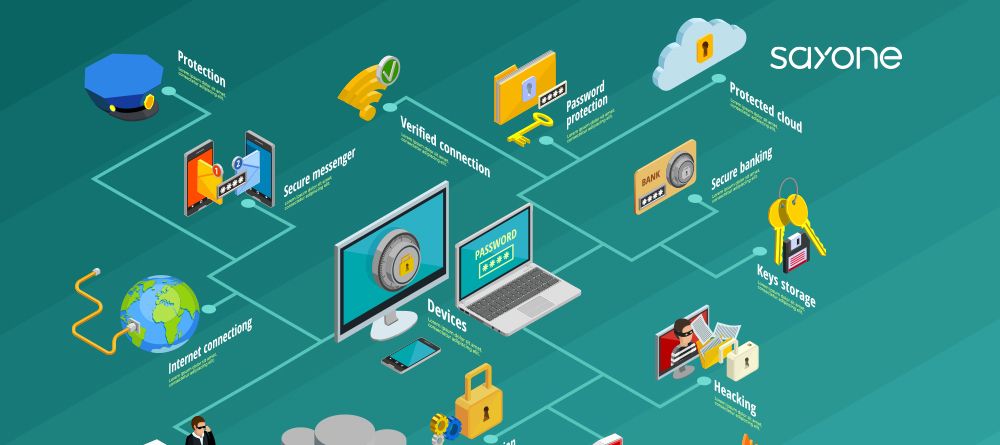
Subscribe to our Blog
We're committed to your privacy. SayOne uses the information you provide to us to contact you about our relevant content, products, and services. check out our privacy policy.

Real PradMay 24, 20237 min read

Generating table of contents...
A microservice architecture refers to an application structure that contains an arrangement or a collection of different autonomous services that are loosely coupled and built to accomplish a specific business function.

This collection of distributed programs communicates over networks. They also sometimes interface with databases and third-party services. Microservices have a large number of points of failure. This has to be taken care of during the process of testing microservices.
Every portion of a broken-down microservices application produces many logs that have to be analyzed deeply. Therefore, it is important to have a very structured monitoring plan ready. For individual microservices, it is best to use service error and response time notifications together with dashboards for an overview and enable continuous monitoring.
Every team in the organization needs to be on the same page before you transition into microservices architecture. Some essentials that teams have to be prepared with include logging formats, shared API documentation, and communication standards.
Read our latest blog “The Best 5 Automation Testing Tools ”.
Badly designed and managed microservices architecture can create chaos instead of providing the help that it was intended to. Therefore, the target architecture should be defined properly and consistency ensured across all microservices’ data. It is a good idea to consider frequent network upgrades to avoid in-service traffic.
A distributed environment’s major challenge is that there are several moving components within the systems and the subsystems. The components undergo constant changes, and also several services interact with each other simultaneously.
Your organization may be managing many teams that are continually working on different systems and subsystems and may be deploying several times a day. If you are not completely aware of these changes made by your team members, there may be some negative impacts in case thorough testing is not performed.
This situation can become highly complex, and the rollbacks can be severe in the event of errors. Because of the dependencies, eliminating one microservice from the system can be a challenging affair. Such actions may cause rollbacks of other deployments dependent on the first. Therefore, performing microservices testing is an important activity.
Given below are the three strategies to make your microservices testing more effective.

Automation testing is done to fit into the continuous integration and continuous delivery (CI/CD) process. For large-scale microservices, load testing is important. Otherwise, other types of testing make it complicated and consume a lot of time (integration testing and microservices security testing). They often slow down the CI/CD pipeline.
Download our eBook for FREE “Factors to Consider When Choosing an Automation Testing Tool”.
Looking to port to microservices? Give us a call today!
To mitigate future risks, it is important to spot high-risk microservices and check these thoroughly early in the cycle. This may take more time but is an effective method as it serves to reduce the issues that may crop up later in the process.
Cloud-based testing platforms such as LambdaTest allow you to conduct automated testing in just a few minutes over an online browser farm that contains 3000+ real browsers, operating systems, and devices. You can speed up the release cycles by 10X if you opt for parallel test execution. LambdaTest helps to test your code thoroughly and ship high-quality applications with confidence.
Service virtualization is a technique that is used for simulating various services’ behavior and components contained within the software. First, you have to create one service using the necessary URLs. This allows these URLs to accept data and respond following the service’s specifications.
Testers, developers, and other key stakeholders should all be on the same page to achieve optimum productivity at every step of the development process. For this, it is crucial to create a service-level agreement to keep all stakeholders in sync. Ideally, the SLA document should be created by developers and testers together.
Read our Blog "Managing Data Consistency in a Microservice Architecture"
The testing pyramid for microservices explains what types of tests are to be covered while performing tests on microservices. Also denoted is how they cover different areas of the software and details about all the interactions.
Unit tests are placed at the bottom of the pyramid for the simple reason that they are fast, cheap, and easily developed. On moving upward, the tests are more complex. They are expensive and slower to build as well as maintain.
Functional tests have more code lines to them than other tests but are easier to group. Finally, integration tests interact with other entities. End-to-end (E2E) tests can be used to test an entire system or subsystem and require a lot of configuration.
Many microservices tests are available, but it is important to determine how to evaluate specific functions. Where testing at the unit level is enough for some services, it does not work in a few other instances if the services are complex and do not have any meaning to test at lower levels.
Testing strategies for microservices should be formulated to cover all the layers as well as those in between. They should also be lightweight. Some of the most crucial types of microservices testing are:
While performing microservices testing, you may encounter the following challenges:
Read our Blog "Microservices Benefits for Mobile App Dev & How to Implement It"
Are you looking to hire the best developers for your web or mobile app development? Get in touch with us today!

We're committed to your privacy. SayOne uses the information you provide to us to contact you about our relevant content, products, and services. check out our privacy policy.

About Author
Co-founder and CEO at SayOne Technologies | Helping startups and enterprises to set up and scale technology teams- Python, Spring Boot, React, Angular & Mobile.

We collaborate with visionary leaders on projects that focus on quality